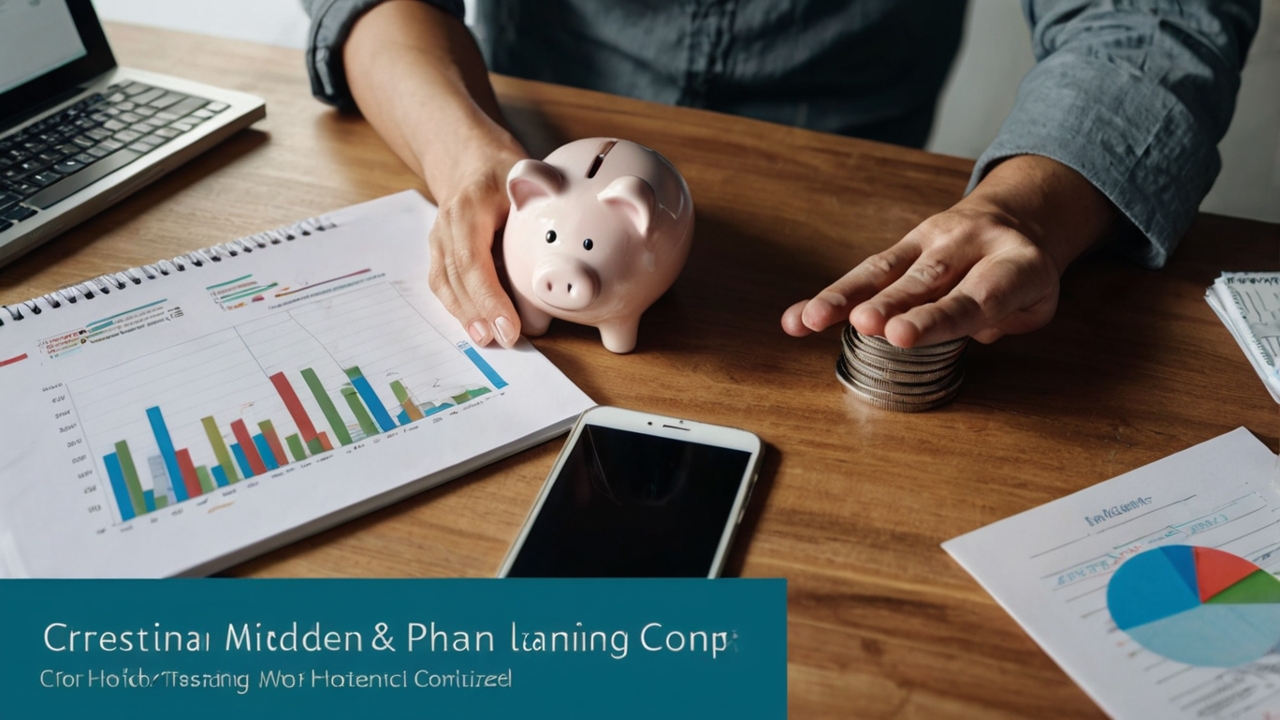Saving While in Debt: Practical Strategies to Break Free
Debt is a heavy burden that weighs down many, who often believe that saving in the face of debt is a pipe dream. However, the truth is that saving is not a luxury, but a necessity to break out of the debt cycle and build a stable financial future. This article offers proven strategies to save and gradually eliminate debt, even in the toughest situations.
Chapter 1: Understanding Your Current Financial Situation
The first step towards saving and eliminating debt is to fully and transparently understand your current financial situation. This includes:
- Calculating Net Income: Determine your net monthly income after deducting taxes, health insurance, and other contributions.
- Tracking Expenses: Monitor all your expenses for at least a month, whether necessary or unnecessary. Use an expense tracking app or a simple spreadsheet.
- Listing Debts: Create a list of all your debts, including the creditor's name, debt type (credit card, personal loan, car loan, etc.), interest rate, minimum monthly payment, and outstanding balance.
Once you have a clear picture of your income, expenses, and debts, you can start developing a plan to save and eliminate debt.
Chapter 2: Creating a Realistic Budget
A budget is a financial plan that outlines how you will spend your money. The budget should be realistic and achievable, taking into account your income, expenses, and debts. Here are some tips for creating an effective budget:
- Use the 50/30/20 Rule: Allocate 50% of your income to essential needs (rent, food, transportation), 30% to wants (entertainment, restaurants, clothing), and 20% to savings and debt repayment.
- Reduce Unnecessary Expenses: Look for ways to cut unnecessary expenses, such as eating out, buying coffee from cafes, and unused subscriptions.
- Find Ways to Increase Income: Consider ways to increase your income, such as working overtime, selling unused items, or getting a second job.
Remember that a budget is not a prison, but a tool to help you control your money and achieve your financial goals.
Chapter 3: Debt Repayment Strategies
There are several strategies for repaying debt, each with its advantages and disadvantages. Here are some of the most common strategies:
- Snowball Method: Focus on paying off the smallest debt first, regardless of the interest rate. Once the smallest debt is paid off, move on to the next smallest debt, and so on. This method provides a significant morale boost and helps you stay motivated.
- Avalanche Method: Focus on paying off the debt with the highest interest rate first. This method saves you money in the long run by reducing the total amount of interest you pay.
- Debt Consolidation: Consolidate all your debts into one loan with a lower interest rate. This simplifies the repayment process and makes it more manageable.
- Negotiating with Creditors: Contact your creditors and try to negotiate a new repayment plan or a lower interest rate. Many creditors are willing to work with you to avoid default.
Choose the strategy that best suits your financial situation and goals.
Chapter 4: Automating Savings
Automated savings is a great way to save money without having to think about it. Set up an automatic transfer from your checking account to your savings account each time you receive your salary. Even small amounts can accumulate over time.
Example: If you transfer $50 weekly to a savings account, you will save $2,600 per year.
Chapter 5: Reducing Fixed Expenses
Fixed expenses are expenses that remain constant each month, such as rent, utility bills, and insurance. Reducing fixed expenses can be an effective way to save money.
- Rent: Consider moving to a smaller apartment or sharing accommodation with someone.
- Utility Bills: Reduce your consumption of electricity, water, and gas.
- Insurance: Compare different insurance rates to get the best deal.
- Cable and Internet Subscriptions: Cancel subscriptions you don't use or negotiate a lower price.
Chapter 6: Reducing Variable Expenses
Variable expenses are expenses that vary from month to month, such as food, entertainment, and clothing. Reducing variable expenses can be easier than reducing fixed expenses.
- Food: Plan your meals in advance, cook at home instead of eating out, and buy in bulk.
- Entertainment: Look for free or low-cost entertainment activities, such as visiting parks and free museums.
- Clothing: Buy clothes during sales seasons or from thrift stores.
Chapter 7: Building an Emergency Fund
An emergency fund is a savings account dedicated to covering unexpected expenses, such as job loss, car repairs, or medical bills. It is recommended to save enough to cover 3-6 months of living expenses in the emergency fund.
The emergency fund protects you from falling into more debt when you face unexpected expenses.
Chapter 8: Investing for the Future
Once you start saving and paying off debt, you can start thinking about investing for the future. Investing helps you grow your money and achieve your long-term financial goals, such as retirement.
Investment Options: Stocks, bonds, mutual funds, and real estate.
Consult a financial advisor to determine the investment options that are right for you.
Chapter 9: Staying Motivated
Saving and eliminating debt is a long-term process, and it can be difficult to stay motivated. Here are some tips to stay motivated:
- Set Realistic Goals: Don't try to change your spending habits overnight. Start with small, achievable goals.
- Reward Yourself: When you achieve a financial goal, reward yourself with something small.
- Track Your Progress: Monitor your progress towards your financial goals. This helps you stay motivated.
- Seek Support: Talk to friends, family, or a financial advisor for support and encouragement.
Chapter 10: Additional Saving Tips
- Compare Prices Before Buying: Compare prices between different stores before buying anything.
- Use Coupons and Discounts: Look for coupons and discounts before buying.
- Buy in Bulk: Buy products you use regularly in bulk.
- Avoid Impulse Buying: Think carefully before buying anything.
- Use Cash Instead of Credit Cards: This helps you avoid overspending.
- Review Your Bills Regularly: Make sure you are not paying for services you don't use.
Saving and eliminating debt is possible, even in the toughest situations. By following these strategies, you can take control of your finances and build a stable financial future.




